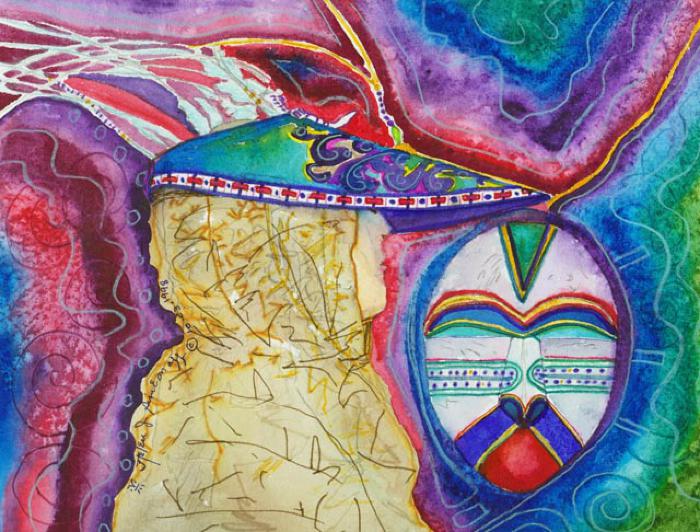Hunting Hat — Caguyaq

In the cool, wet Kodiak environment, hats are an essential item of clothing. Among Alutiiq people, headgear was once fashioned from many different materials. Warm, water-resistant hats were sewn from animal pelts and loon skins, woven from spruce root and carved from wood. The most spectacular of these were bentwood hats, expertly bent to shape with steam.
Bentwood hats shielded their wearers from sun and sea spray, but they also held magical powers. These elegant hats hid the hunter’s human face and transformed him into a mystical being with the power to kill seals, porpoises, and whales. Each hat was elaborately decorated—a work of art reflecting the owner’s personality, achievements, and social status. Hats were brightly painted with geometric designs, images of sea mammals, and hunting scenes and then embellished with ivory carvings, beads, woven tassels, feathers, and sea lion whiskers. Each element was rich with symbolism. Some motifs recounted great chases; others referenced helpful bird or animal spirits.
On Kodiak, the typical hunting hat had a closed crown and a long brim. In contrast, Alutiiq people of the Alaska Peninsula wore bentwood visors with an open crown and shorter brim, much like their Yup’ik neighbors to the north. The art of hat bending continues today. Artists like Jacob Simeonoff of Akhiok and Peter Lind of Chignik are passing this tradition to the next generation, teaching carving and bending and helping students develop their own unique decorative styles.
